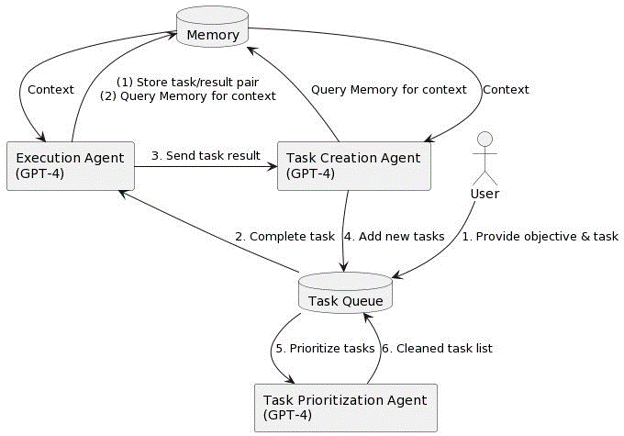The Latest AI Breakthrough: Agent-Oriented Programming
ChatGPT and Microsoft’s AI-powered Bing search engine took the world by storm earlier this year, with fascinated observers feeding endless prompts into the models – sometimes with decidedly weird results.
But the pace of modern change is relentless – even over the space of just a few months – and a new breed of agent-oriented AI models appears poised to upend everything we thought we knew about the power of AI.
What are agent-oriented AI models, you ask? Let’s find out.
What is Agent-Oriented Programming?
Conversational and chat-based large language models (LLMs) such as ChatGPT rely entirely on human inputs – also known as prompts – to generate text or images, translate languages, and even drive cars.
While these models have the advantage of improving their results as they are fed more data, these human inputs can be difficult and time-consuming to refine enough that the model performs to expectations. They can also only perform one task at a time.
That’s why the latest round of AI innovation driven by agent-oriented programming focuses on scalable models that can solve complex problems without prompting and even facilitate autonomous cooperation between agents. Automated AI models can chain autonomous tasks together in an automatic loop to solve an overarching problem without requiring human intervention.
The idea is that users only need to ask these autonomous models once to solve a complex problem, instead of ChatGPT needing continuous manual prompts and a human to chain its answers together.
According to some observers, models driven by agent-oriented programming are the next step to developing strong AI – or AI that essentially thinks through complex problems no differently than the human brain.
“Strong AI or artificial general intelligence (AGI) is a generalized AI that is theoretically capable of carrying out many different types of tasks,” explains AutoGPT.net, “even ones it wasn’t originally created to carry out, much the same way as a naturally intelligent entity (such as a human) can.”
Which Agent-Oriented AI Systems Exist?
Various autonomous AI models already exist, including:
- AutoGPT (GitHub)
- Baby AGI (GitHub)
- AgentGPT (GitHub)
- CAMEL (GitHub)
- Microsoft JARVIS (aka HuggingGPT) (GitHub)
- Web LLM (GitHub)
- God Mode
AutoGPT and Baby AGI must be used via a command-line interface. The others work through a web browser (HuggingGPT can support either).
Each model has its strengths, weaknesses, and preferred use cases. We’ll outline a few of them below.
AutoGPT
AutoGPT, probably the best known of the bunch, is driven by OpenAI’s GPT-4 and can chain together LLM “thoughts” to achieve its assigned goal. The model can break large tasks into smaller subtasks and use the internet and other connected data sources to solve problems.
Indeed, instead of simply answering manual commands one by one, Auto-GPT can automatically assign itself new objectives, generate prompts and responses, and revise prompts in response to learned information. It can autonomously search the web or perform API interactions, with some observers saying it’s possible Auto-GPT may be able to automatically improve its own source code.
Baby AGI
Baby AGI is a Python-based task management system that leverages GPT-4 (for its natural language processing (NLP) capabilities), Pinecone vector search (to store results), and the LangChain framework (for decision-making) to create, organize, prioritize, and execute tasks. Baby AGI is able to create its own tasks to achieve predefined objectives, often based on the outcome of previous tasks.

How the Baby AGI system works.
SOURCE: https://www.kdnuggets.com/2023/04/baby-agi-birth-fully-autonomous-ai.html
Running on an infinite loop, the system is able to do all this through just four steps:
- The highest-priority task is selected from the task list
- The model’s execution agent receives and completes the task (based on context learned via the OpenAI API)
- Results are then stored in Pinecone
- New tasks are then created and prioritized based on the outcomes of steps 1-3 and the overall objective
CAMEL
CAMEL, short for the catchy title of Communicative Agents for “Mind” Exploration of Large Scale Language Models, uses a novel communicative agent to create a role-playing situation among AI agents. Agents and assistants in the system can be assigned a particular role (such as stock trader, accountant, doctor, or actor), given a preliminary idea, and then asked to discuss the topic.
Users can deploy AI agents to discuss the topic in real-time, then watch them collaborate and (hopefully) solve the problem at hand.
CapeStart: Your AI and NLP partner
Whether your business has already implemented AI solutions into your workflows or you’re an AI novice, CapeStart’s teams of AI, NLP, and machine learning experts can help you scale your innovation through cutting-edge automation.
We deliver accurate data annotation for machine learning models, software development for AI, and custom and pre-built machine learning models to suit virtually any use case. Contact us today to set up a brief one-on-one discovery call.

